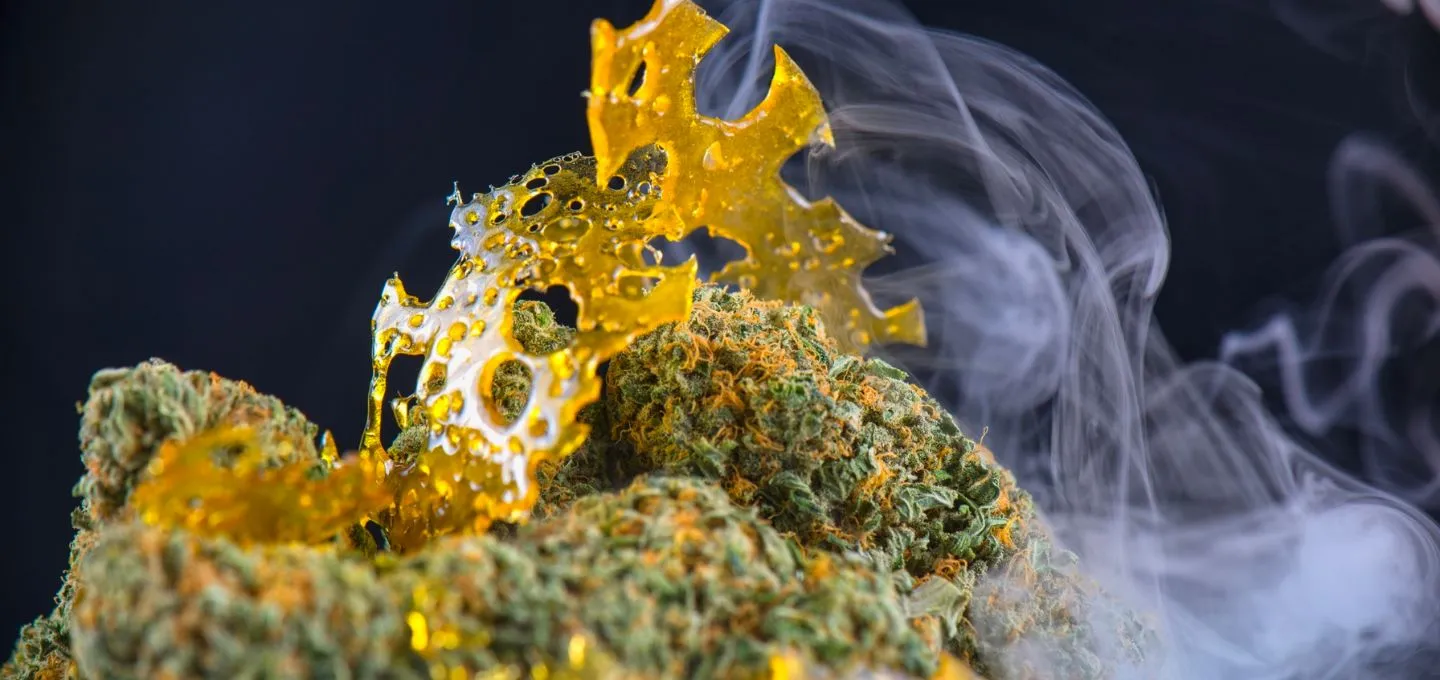Shatter is one of the most popular types of cannabis concentrates.
It has a clear, glass-like appearance that shatters when handled, giving it its descriptive name.
Shatter provides a potent dose of cannabinoids like THC and terpenes in a concentrated form.
What is Shatter?
Table of Contents
Shatter is a solid, brittle cannabis extract that has a transparent, glassy appearance and texture.
It contains a high concentration of cannabinoids, typically testing between 70-90% THC. The name “shatter” comes from the way it breaks into pieces with ease.
It has a smooth, stable structure, making it easier to handle than some other concentrates.
Shatter begins as a marijuana extract but is further processed to remove fats, lipids and waxes found in the plant until only the desirable resins remain.
This gives it its signature clarity and shatter-like texture. It can range from being sticky like sap to completely solid and snappable.
How is Shatter Made?
Shatter is made through a solvent-based extraction process using materials like butane, CO2 or ethanol to strip away cannabis compounds.
First, the marijuana plant material is blasted to separate resins containing terpenes and cannabinoids like THC and CBD from the plant.
Common methods include closed-loop CO2 systems or butane extraction.
Then, the resulting oil is placed under heat and vacuum pressure to purge the solvent while agitating the extract to remove impurities.
The extract cools and stabilizes with the shatter texture.
Additional steps like winterization with ethanol may be used to further refine and clarify the final product. Proper care is taken to remove all solvents from the purified cannabis concentrate.
Difference Between Shatter and Wax
While shatter and wax are both cannabis concentrates, they differ in consistency and texture. Shatter has a smooth, glass-like texture that breaks easily.
Wax has a softer, opaque appearance. It is malleable, like beeswax.
The consistency of wax makes it easier to handle and dose compared to the more capable shatter. Both provide high THC potency, but wax may retain more terpenes and minor cannabinoids compared to shatter.
The starting material and extraction process used also impacts the end product’s consistency.
Butane extraction tends to make shatter, while CO2 extraction more commonly produces waxes and crumbles.

 Fact Checked by Doctor Name
Fact Checked by Doctor Name